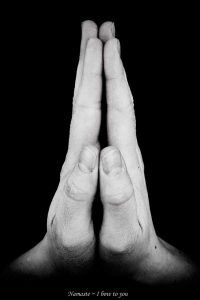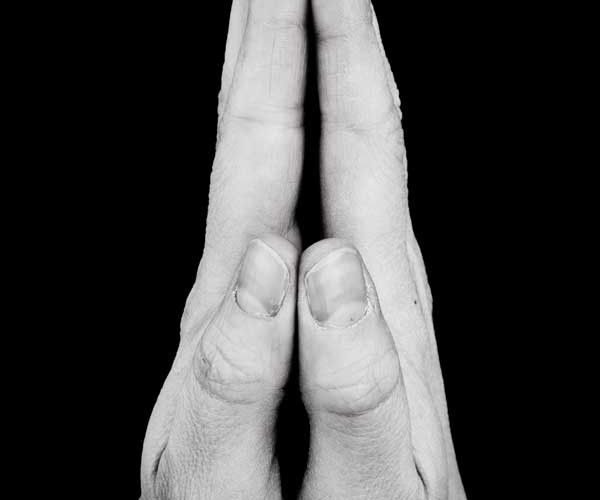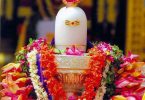Namaste Significance
Indians greet each other with namaste. The two palms are placed together in front of the chest and the head bows whilst saying the word namaste. This greeting is for all – people younger than us, of our own age, those older than friends, even strangers and us.
 Namaste could be just a casual or formal greeting, a cultural convention or an act of worship. However there is much more to it than meets the eye. In Sanskrit namah + te = namaste. It means – I bow to you – my greetings, salutations or prostration to you. Namaha can also be literally interpreted as “na ma” (not mine). It has a spiritual significance of negating or reducing one’s ego in the presence of another.
Namaste could be just a casual or formal greeting, a cultural convention or an act of worship. However there is much more to it than meets the eye. In Sanskrit namah + te = namaste. It means – I bow to you – my greetings, salutations or prostration to you. Namaha can also be literally interpreted as “na ma” (not mine). It has a spiritual significance of negating or reducing one’s ego in the presence of another.
What do we mean when we say “namaste?” It’s not what you might imagine. We hear it as we exit yoga class. We may even hear it after an encounter or meeting with a friend. It directly translates to “the divine in me bows to the divine in you.”
There are five forms of formal traditional greeting enjoined in the shaastras of which namaskaram is one. This is understood as prostration but it actually refers to paying homage as we do today when we greet each other with a namaste.
The real meeting between people is the meeting of their minds. When we greet another, we do so with namaste, which means, “may our minds meet,” indicated by the folded palms placed before the chest. The bowing down of the head is a gracious form of extending friendship in love and humility
The spiritual meaning is even deeper. The life force, the divinity, the Self or the Lord in me is the same in all. Recognizing this oneness with the meeting of the palms, we salute with head bowed the Divinity in the person we meet. That is why sometimes, we close our eyes as we do namaste to a revered person or the Lord – as if to look within. The gesture is often accompanied by words like “Ram Ram,” “Jai Shri Krishna”, “Namo Narayana”, “Jai Siya Ram”, “Om Shanti” etc – indicating the recognition of this divinity.
When we know this significance, our greeting does not remain just a superficial gesture or word but paves the way for a deeper communion with another in an atmosphere of love and respect.
Namaste Meaning in Buddhism:
It is used both for salutation and valediction. Namaste is usually spoken with a slight bow and hands pressed together, palms touching and fingers pointing upwards, thumbs close to the chest. This gesture is called Añjali Mudrā or Pranamasana. In Hinduism it means “I bow to the divine in you”.
Three things to remember the next time you say namaste
- It’s important to create a ring of spiritual connection while saying namaste. The positive energy exuded creates the auric field of positive spiritual power. Only say namas when meant in a positive manner.
- Second, the lack of physical contact is what creates a more positive aura. If contact is made, the chances of passing negativity increase. When a lack of physical contact is made, the chances of contact minimize.
- Last but not least, remember to place your fingertips softly together and simply graze the fingertip pattern, shape, and texture.
Namaste is a thank you to the world created and around us. The “divine in me honors the divine in you” references the spiritual transfer of the word. Honor the individual who is graced by your presence.





